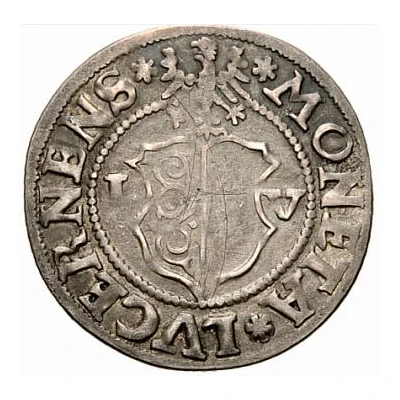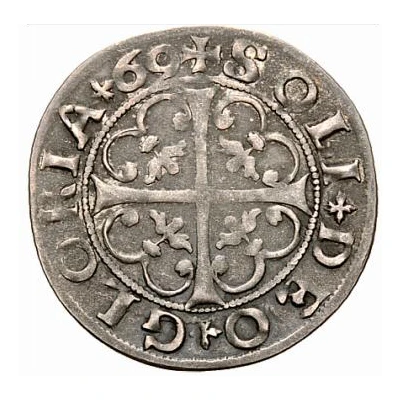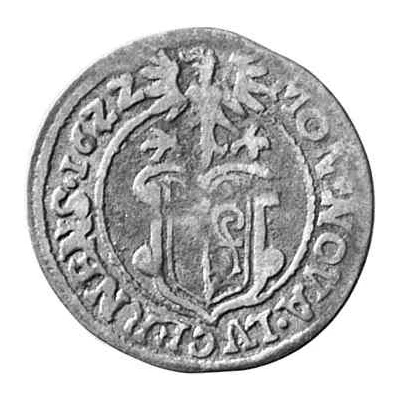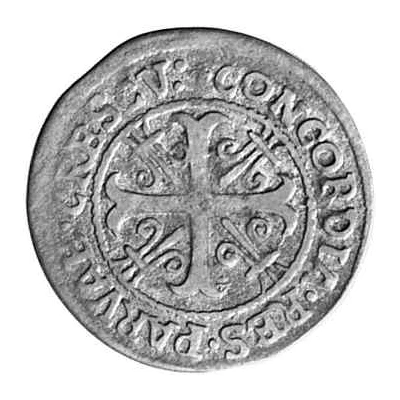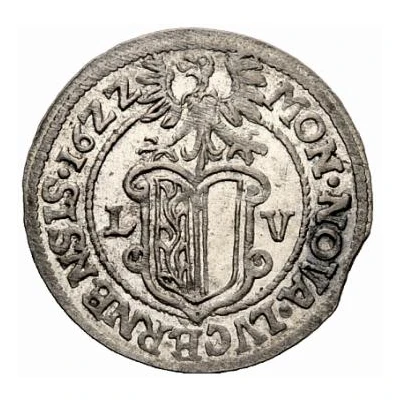
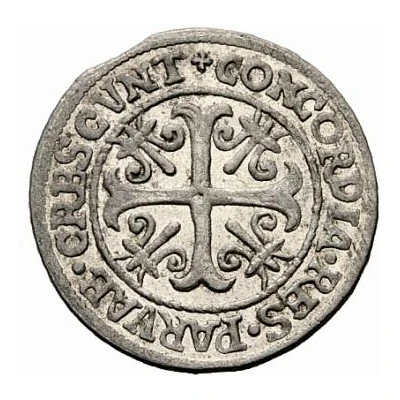

© Sincona AG
Batzen MONETA NOVA LVCERNENSIS; L V
1622 year| Billon | 1.8 g | 27.0 mm |
| Issuer | City of Lucerne |
|---|---|
| Period | Free imperial city (1415-1648) |
| Type | Standard circulation coin |
| Year | 1622 |
| Value | 1 Batzen = 1⁄18 Thaler |
| Currency | Thaler (1550-1656) |
| Composition | Billon |
| Weight | 1.8 g |
| Diameter | 27.0 mm |
| Shape | Round |
| Orientation | Medal alignment ↑↑ |
| Demonetized | Yes |
| Updated | 2024-10-07 |
| Numista | N#86240 |
|---|---|
| Rarity index | 89% |
Reverse
Cross with split ends. Four fleurs-de-lis pointing inwards in the cantons.
Script: Latin
Lettering: + CONCORDIA · RES · PARVAE · CRESCVNT
Translation: Small things flourish by concord.
Edge
Plain.
Comment
The Latin phrase "Concordia res parvae crescunt" (small things flourish by concord) was originally used in chapter 10 of the "Bellum Jugurthinum" of Roman Republican writer Sallust (86-35 BC). The phrase is usually translated in English as "unity makes strength". The full quotation reads: "nam concordia parvae res crescunt, discordia maxumae dilabuntur" (concord will make small things flourish, discord will destroy great things). The phrase also appears in Seneca the Younger's "Epistulae Morales ad Lucilium", published in AD 65.Varieties:
Variety 1 (Wielandt# 84)
Obverse lettering: MONE • NOVA • LVCERNENSIS • 16zz
Reverse lettering: + CONCORDIA • RES • PARVAE • CRECV
Weight: 1.7 g
Diametre: 23.0 mm
Variety 2 (Wielandt# 84a)
Obverse lettering: MONE • NO • LVCERNENSIS • 16zz
Reverse lettering: ✠ + CONCORDIA • RES • PARVAE • CRESCVNT
Weight: 1.8 g
Diametre: 24.0 mm
Variety 3 (Wielandt# 84b)
Obverse lettering: MONE • NO • LVCERNENSIS • 16zz
Reverse lettering: + CONCORDIA • RES • PARVAE • CRESCVNT
Weight: 1.83 g
Diametre: 27.0 mm
Variety 4 (Wielandt# 84c)
Obverse lettering: MONE • NOV • LVCERNENSIS 16zz
Reverse lettering: + CONCORDIA • RES • PARVAE • CRESCVNT
Variety 5 (Wielandt# 84d)
Obverse lettering: MONE • NOV • LVCERNENSIS 16zz
Reverse lettering: + CONCORDIA • RES • PARVAE • CRESCVN
Weight: 1.79 g
Diametre: 27.1 mm
Variety 6 (Wielandt# 84e)
Obverse lettering: MONE • NO • LVCERNENSIS • 16zz
Reverse lettering: + CONCORDIA • RES • PARVAE • CRESCVN
Weight: 1.7 g
Diametre: 23 mm
Variety 7 (Wielandt# 84f)
Obverse lettering: MONE + NOV + LVCERNENS : 16zz
Reverse lettering: CONCORDIA • RES • PARVAE • CRESCVN
Weight: 1.94 g
Diametre: 24.0 mm
Variety 8 (Wielandt# 84g)
Obverse lettering: MONE • NO • LVCERNENS : 16zz
Reverse lettering: + CONCORDIA • RES • PARVAE • CRESCV :
Variety 9 (Wielandt# 84h)
Obverse lettering: MONE + NOV + LVCERNENS : 16zz
Reverse lettering: + CONCORDIA • RES • PARVAE • CRESCV :
Variety 10 (Wielandt# 84i)
Obverse lettering: MONE + NOV + LVCERNENS • 16zz •
Reverse lettering: + CONCORDIA • RES • PARVAE • CRESCV :
Variety 11 (Wielandt# 84k)
Obverse lettering: MON ✶ NOVA • LVCERNENSIS • 16zz
Reverse lettering: + CONCORDIA • RES • PARVAE • CRESCV :
Weight: 1.7-1.93 g
Diametre: 23.5 mm
Variety 12 (Wielandt# 84l)
Obverse lettering: MON • NOVA • LVCERNENSIS • 16zz
Reverse lettering: + CONCORDIA • RES • PARVAE • CRESCV :
Variety 13 (Wielandt# 84m)
Obverse lettering: MON • NOVA • LVCERNENSIS • 16zz
Reverse lettering: • CONCORDIA • RES • PARVAE • CRESCVN
Variety 14 (Wielandt# 84n)
Obverse lettering: MON • NOVA • LVCERNENSIS • 16zz
Reverse lettering: ✶ CONCORDIA • RES PARVAE CRESCVNT
Weight: 1.6 g
Diametre: 23.0 mm
Variety 15 (Wielandt# 84o)
Obverse lettering: MON • NOVA • LVCERNENSIS • 16zz
Reverse lettering: ❀ CONCORDIA • RES • PARVAE CRESCVN :
Variety 16 (Wielandt# 84p)
Obverse lettering: MON • NOVA • LVCERNENSIS • 16zz
Reverse lettering: ✶ CONCORDIA • RES • PARVAE • CRESCVN – : –
Weight: 2.0 g
Diametre: 24.0 mm
Interesting fact
The Batzen coin from the City of Lucerne, minted in 1622, is interesting because it was made of Billon, a metal alloy that was commonly used in the production of coins during that time period. Billon is a combination of silver and other metals, such as copper or tin, and was valued for its durability and resistance to wear and tear. The use of Billon in the production of coins was a cost-effective way for minting authorities to produce coins that were both durable and aesthetically pleasing.
